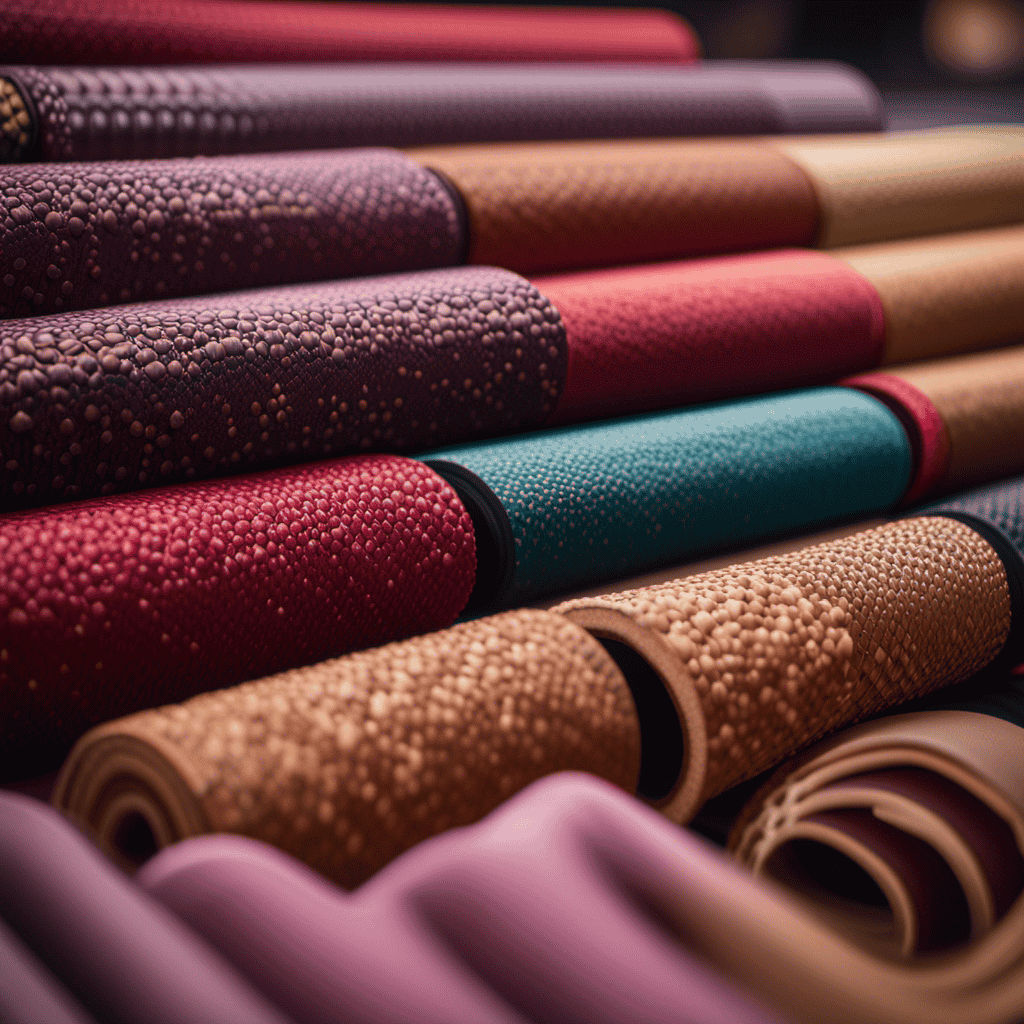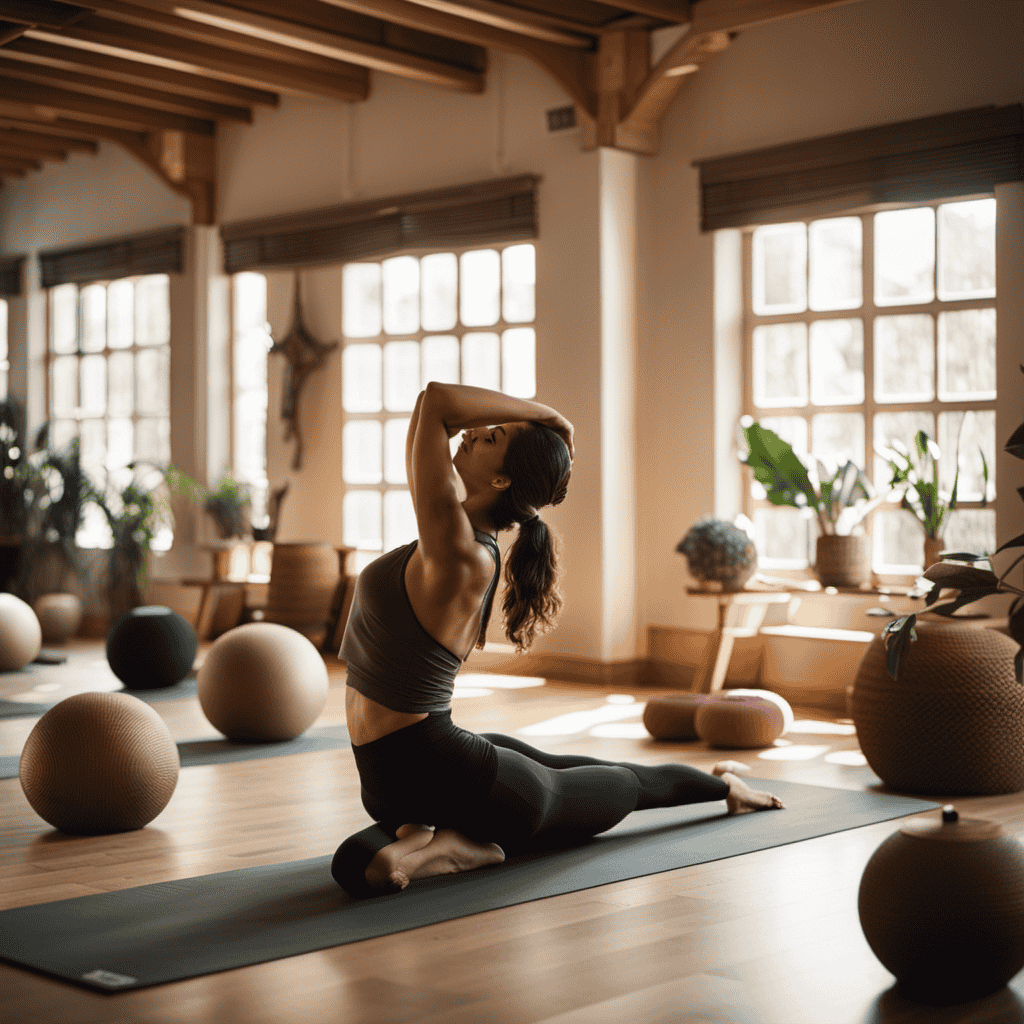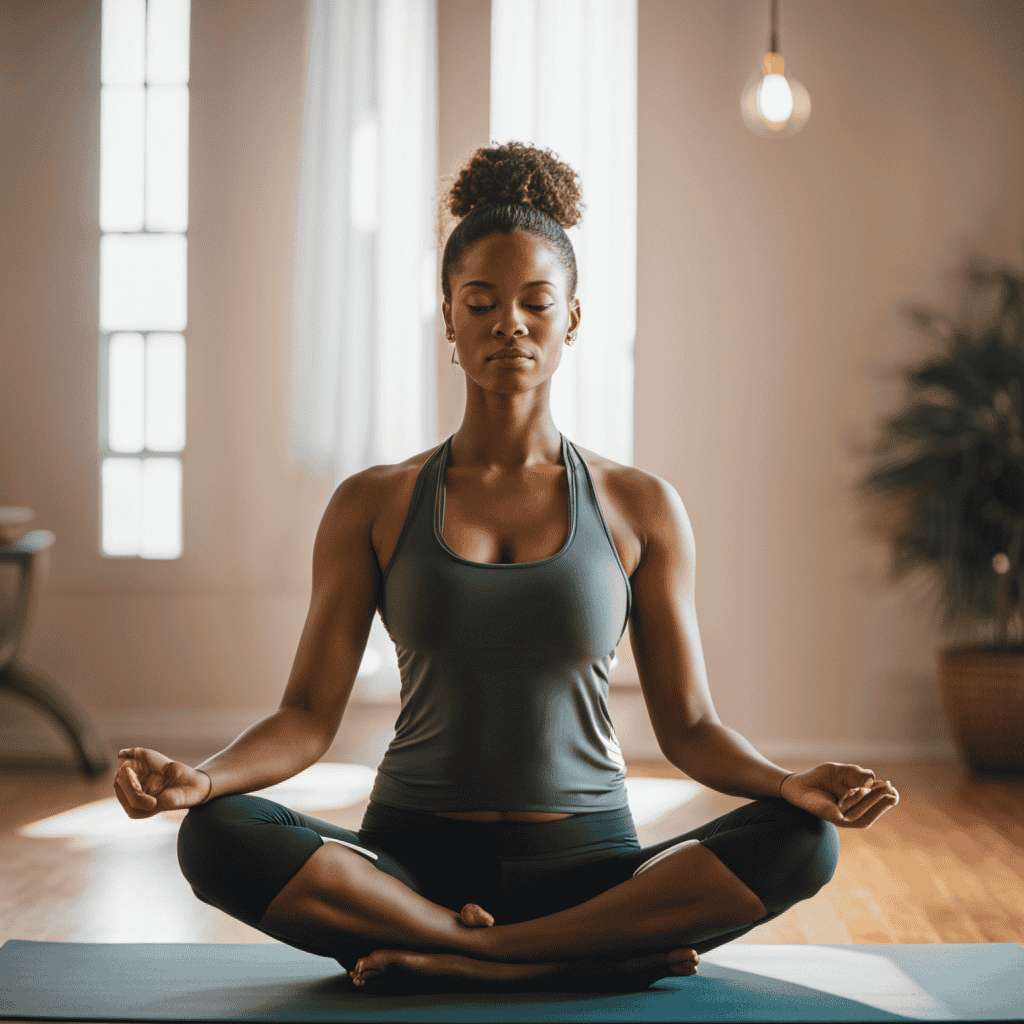As I began my hot yoga journey, it became clear to me how crucial it is to have a top-notch yoga mat. The worst thing is slipping and sliding during challenging poses. So, I decided to search for the top hot yoga mats available.
From natural rubber to polyurethane foam, and even cork surfaces, there are plenty of options to suit every preference. Join me as I explore the top hot yoga mats available, so you can find the perfect one for your practice.
Key Takeaways
- Natural rubber mats offer superior grip and durability, making them a great choice for hot yoga practitioners.
- Polyurethane foam mats provide excellent cushioning and support, making them comfortable for intense yoga sessions.
- Cork yoga mats are sustainable and eco-friendly, with natural antimicrobial properties and excellent grip.
- When choosing a hot yoga mat, it is important to consider individual preferences and needs, as well as factors such as thickness, texture, and weight.
Types of Mats
I’ve learned that there are several types of hot yoga mats available. These include those made with natural rubber, polyurethane foam, and cork surfaces. Each type offers unique features and benefits.
Cork yoga mats, for example, are known for their natural antimicrobial properties. This makes them a great choice for hot yoga where sweat is abundant. They provide excellent grip and traction, helping you stay balanced and focused during your practice. Additionally, cork is a sustainable material. This makes it an eco-friendly option for yogis who prioritize environmental sustainability.
On the other hand, extra long yoga mats are designed to accommodate taller individuals. They provide more space and comfort during poses. However, they may be less portable and take up more storage space.
It’s important to consider your specific needs and preferences when choosing the right hot yoga mat for you.
Natural Rubber
One popular option for yoga mat material is made from rubber sourced from trees. Natural rubber mats have gained popularity in recent years due to their numerous benefits. Here are three reasons why natural rubber mats are a great choice for hot yoga:
-
Excellent Grip: Natural rubber has a sticky texture that provides exceptional grip, ensuring that you stay in place during your practice, even when you’re sweating.
-
Durability: Natural rubber mats are known for their durability. They can withstand the wear and tear of regular use, making them a long-lasting investment.
-
Eco-Friendly: Natural rubber is a sustainable and renewable resource. Unlike synthetic materials, it is biodegradable and does not harm the environment.
When comparing natural rubber mats, it is essential to consider factors such as thickness, texture, and weight. Each mat may have its unique features, but natural rubber consistently offers superior grip and durability, making it a top choice for hot yoga enthusiasts.
Polyurethane Foam
I recently discovered the benefits of using polyurethane foam mats for my hot yoga practice.
Polyurethane foam mats have become increasingly popular among yoga enthusiasts due to their unique advantages. One of the main advantages is their excellent cushioning and support, which provides great comfort during intense yoga sessions.
The foam material also has excellent grip, ensuring that I can maintain my poses without slipping. Additionally, polyurethane foam mats are easy to clean and maintain, making them a convenient choice for hot yoga practices that involve a lot of sweat.
However, there are a few disadvantages to consider. Polyurethane foam mats tend to be less durable compared to other materials, and they may develop wear and tear over time. Additionally, some people may find the foam material to be less eco-friendly compared to natural rubber or cork options.
Overall, the advantages of polyurethane foam mats make them a great choice for hot yoga practitioners looking for comfort and grip, but it’s important to consider the potential drawbacks as well.
Frequently Asked Questions
Are hot yoga mats made with natural rubber biodegradable?
Yes, hot yoga mats made with natural rubber are biodegradable. This is due to the fact that natural rubber is derived from a renewable resource and breaks down over time, minimizing the environmental impact of these mats.
Can I use a polyurethane foam yoga mat for hot yoga?
Polyurethane foam yoga mats can be used for hot yoga, but they may not offer the same level of grip and durability as natural rubber mats. Cork surface yoga mats provide excellent grip, antimicrobial properties, and are eco-friendly.
Do yoga mats with cork surfaces have a strong odor?
Yoga mats with cork surfaces provide excellent grip and stability during hot yoga sessions. They are also known for being eco-friendly and durable. Additionally, cork mats have a minimal odor compared to other materials, making them a popular choice among yogis.
Are hot yoga mats with extra length suitable for taller individuals?
Hot yoga mats with extra length are suitable for taller individuals as they provide the advantage of more space to stretch out. However, it is important to consider alternative mat materials that offer the desired length.
What unique features do yoga mats with cork surfaces offer?
Yoga mats with cork surfaces offer unique features such as excellent durability and natural antimicrobial properties. The cork surface provides a firm grip, even during hot yoga sessions, and is also eco-friendly and sustainable.
Conclusion
So there you have it, folks! After thorough research and analysis, I’ve provided you with a comprehensive guide to the best hot yoga mats available on the market.
Whether you prefer natural rubber, polyurethane foam, or a cork surface, there is a mat that suits your needs.
Remember, finding the right mat is crucial for a safe and enjoyable hot yoga session. So don’t wait any longer, grab your mat and get ready to sweat it out!
Namaste!









